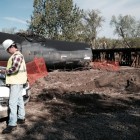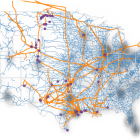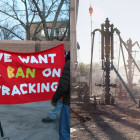Audio
Crude Oil By Rail: On The Rise In Colorado And Everywhere
|
The transport of crude oil by rail has spiked dramatically in recent years. From 2012 to 2013 the amount carried by the country’s major freight railroads increased nearly 75 percent, according to the American Association of Railroads. Even though crude oil accounted for just over 1 percent of overall rail traffic last year, there’s growing public concern about the potential oil spills and other hazards. This increase in crude oil by rail is playing out across Colorado’s Niobrara formation along the eastern plains, with resource-rich Weld County being ground zero. As the state’s oil production boom continues—exceeding the capacity of pipelines that traditionally have carried the oil—more companies are shipping crude by rail. Over the past two years, rail companies have built two crude loading facilities and doubled capacity at a third site in Weld County.










